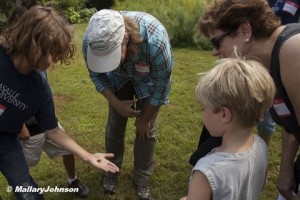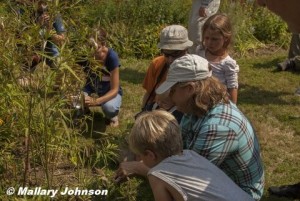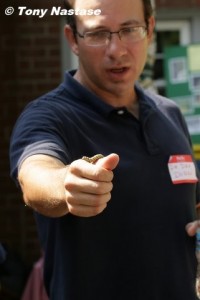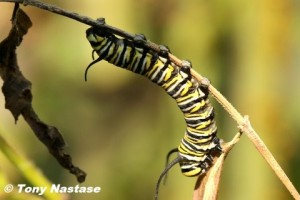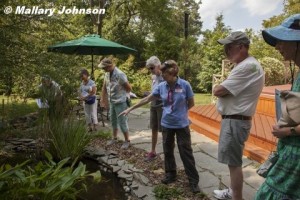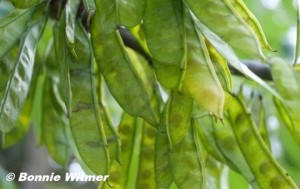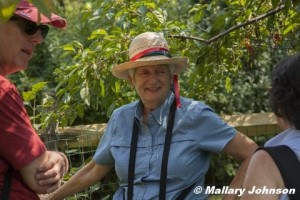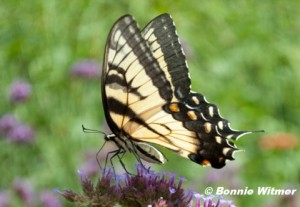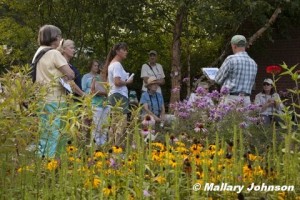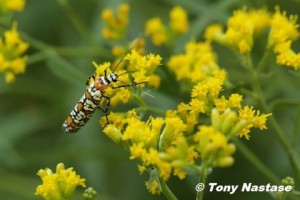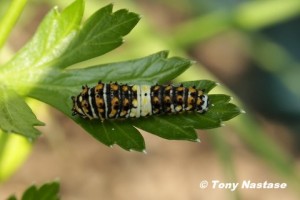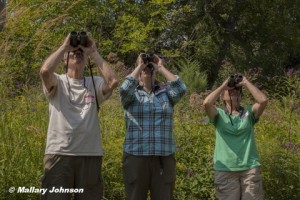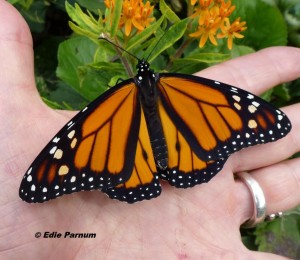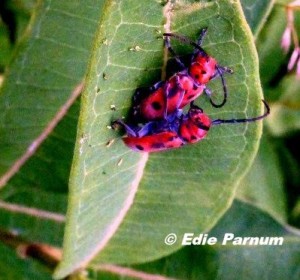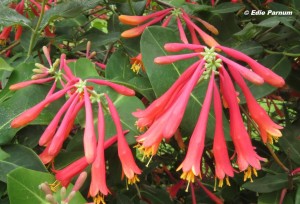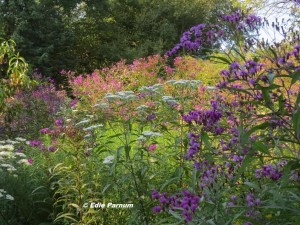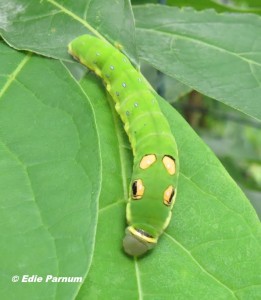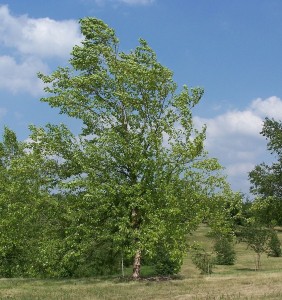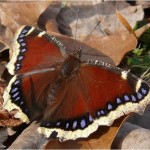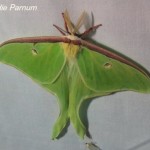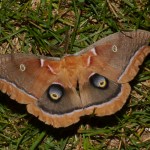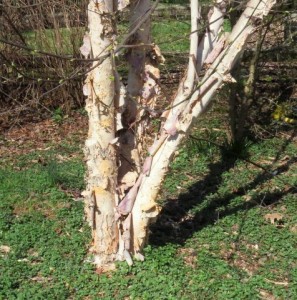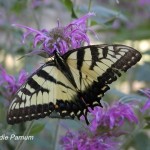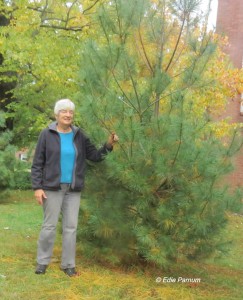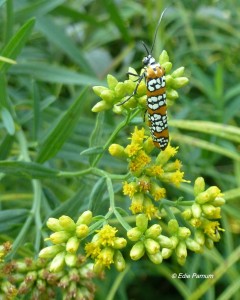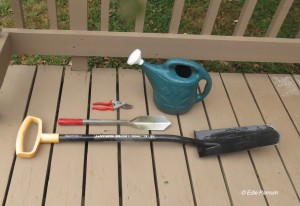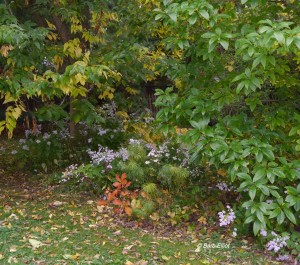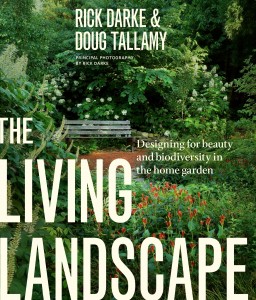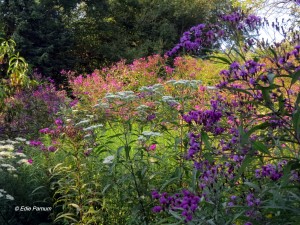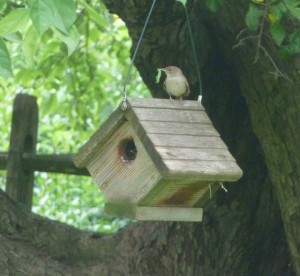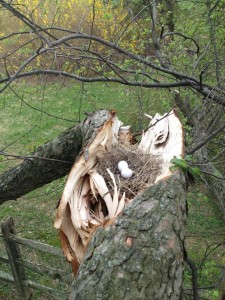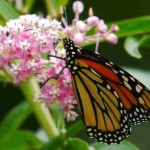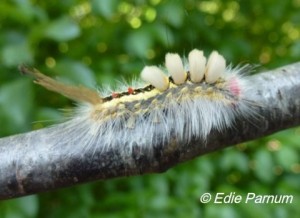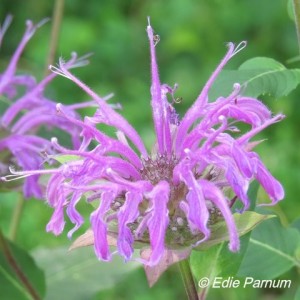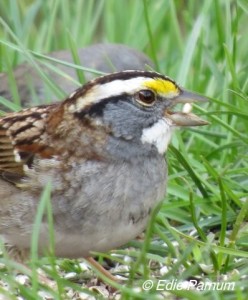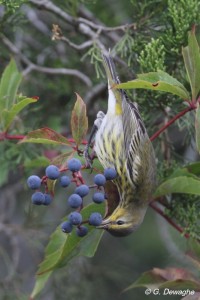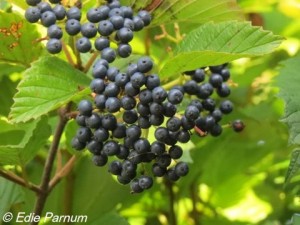By Edie Parnum
For eight years I have been gardening for nature on my ¾-acre suburban property. My yard with its abundance of native plants teems with birds, butterflies, bees, beetles, moths, and other creatures both big and small. On August 29 my property abounded with people, too. I had invited nature-loving friends to enjoy my native plants and discover the creatures they support.

Cardinal Flower, Great Blue Lobelia, and Grass-leaved Goldenrod. Photo © Mallary Johnson. Click to enlarge.
Some people came for just an hour, others stayed all day. Most participated in one of the three guided yard tours. The insect and pollinator walks were popular, too. Kids enjoyed their own nature and insect events. A sizable group drove to Barb Elliot’s nearby property and saw her pond and thriving native plant habitat. Some truly nature-crazed individuals stayed after dark for moth night.
Unquestionably, the native plants were a hit. All the species were labeled for easy identification. Many of my favorite plants (Short-toothed Mountainmint, Grass-leafed Goldenrod, Upland Ironweed, Cardinal Flower, Great Blue Lobelia, Garden Phlox, Trumpet Vine, Trumpet Honeysuckle, Large-leafed Aster, and Sneezeweed) were in bloom. Berries on woody plants (Nannyberry and Blackhaw Viburnums, Flowering and Silky Dogwoods, Winterberry Holly, Black Chokeberry) and a vine (Virginia Creeper) were ripe and ready for the fall migrants. (Click here for my complete yard plant list.)
Insects attracted notice and won new converts. Many admired the Monarch and Black Swallowtail caterpillars. The pollinators were active on the flowers. We saw native bees (European Honey bees, too), wasps, flies, beetles, day-flying moths, as well as Ruby-throated Hummingbirds spreading pollen while feeding on the nectar. Our entomologist, Dan Duran, PhD, identified a large blue-winged wasp (Scolia dubia) nectaring on mountainmint. This wasp, a parasite on the larvae of Japanese Beetles, is now a favorite of mine.
The sharp-eyed kids on Debbie Beer’s nature walk saw a migrant American Redstart. By turning over rocks and logs, they discovered slugs and other creepy-crawlies. They also found spiders (the wolf spider was popular), beetles, and a cicada shell—goodies the adults missed.
Vince Smith gave us a geology lesson. My property is composed of Precambrian gneiss and schist, one of the oldest soils on the planet. Because it’s well-drained, the Tulip Poplar, Black Gum, and various oaks I’ve planted will develop deep roots. They should become massive trees and provide wildlife value for decades, perhaps centuries.
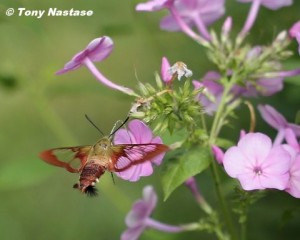
Hummingbird Clearwing, a day-flying sphinx moth, on Garden Phlox. Photo © Tony Nastase. Click to enlarge.
Usually I merely write about my yard’s plants and animals and post photos on the Backyards for Nature blog. However, neither words nor pictures are enough. Seeing the natural beauty of my yard and discovering the creatures living there is more powerful.
Many people told me they were inspired to create their own backyard ecosystems. Others vowed a renewed commitment to enhance their developing habitats.
They said Nature Discovery Day was fun. I could see it on their smiling faces.
************************************ Special Note ********************************************** I will be selling my house in the spring of 2016. If you or anyone you know is interested in a property that’s alive with nature, contact me at edie@backyardsfornature.org

The Double-banded Scoliid Wasp, Scolia bicincta, parasitizes beetle larvae. Photo @ Link Davis. Click to enlarge.
x


